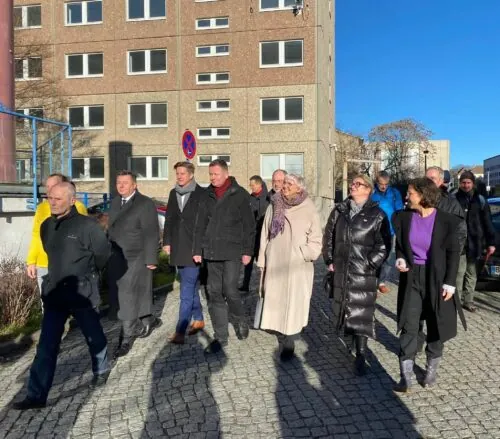
Campus or democracy
The people in the GDR showed that it is possible to overthrow a brutal and repressive regime by peaceful means: the so-called Peaceful Revolution is a model for many democracy movements worldwide. One of the central places of spying and repression was the Stasi headquarters in Normannenstraße in Lichtenberg – my home district in Berlin. At this place, up to 7,000 employees organised the surveillance and persecution of the population for almost four decades.
In 1990, this place became a central scene of the Peaceful Revolution. Demonstrators entered the sealed-off area and prevented the Stasi from destroying important documents of the SED dictatorship and its repressive apparatus. Today, parts of the site are used as a place of education about dictatorship and resistance. But many buildings remain empty and are increasingly falling into disrepair.
This should not happen to a place of such national and global importance. That is why I, together with many others, am committed to turning the former Stasi headquarters into a living place of remembrance of the repression organised from this base, of the Peaceful Revolution and the process of coming to terms with the SED dictatorship – and at the same time into a place of learning and exchange about democracy and democracy movements in the here and now. Together we want to turn the site into a living memorial to the Peaceful Revolution: A Campus for Democracy in the heart of Europe and with international appeal. There are democracy movements on every continent. But only a few have been as successful as ours.
We are developing concrete ideas for this vision as well as events and dialogue forums. We do this in partnership and together with local actors and interested citizens. Here you will always find up-to-date information:









